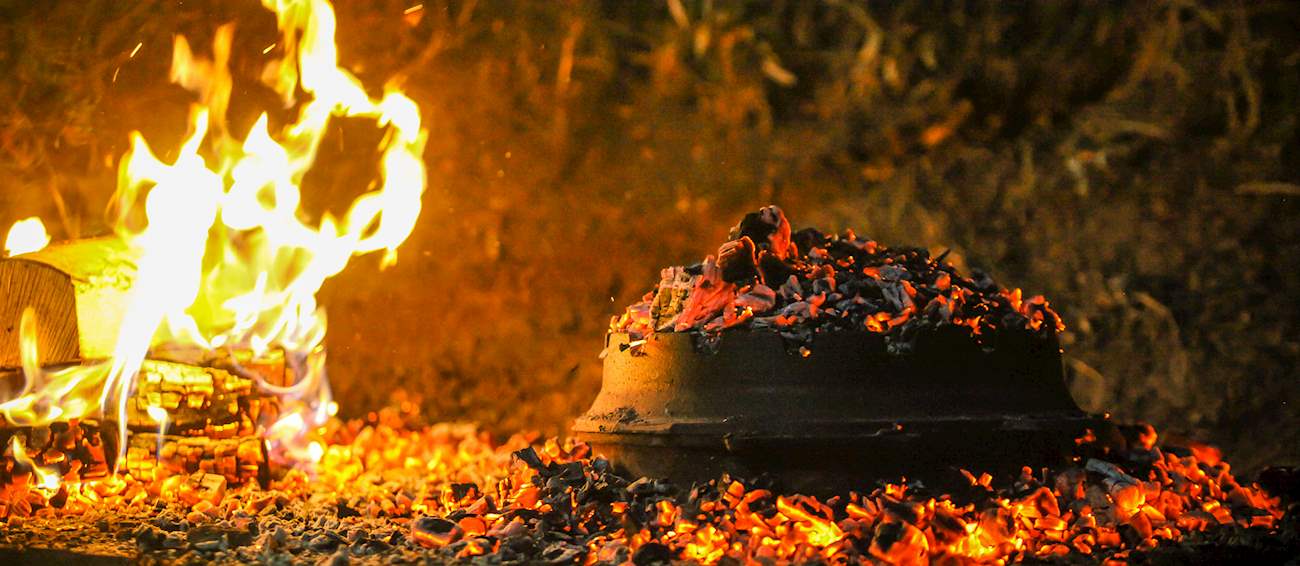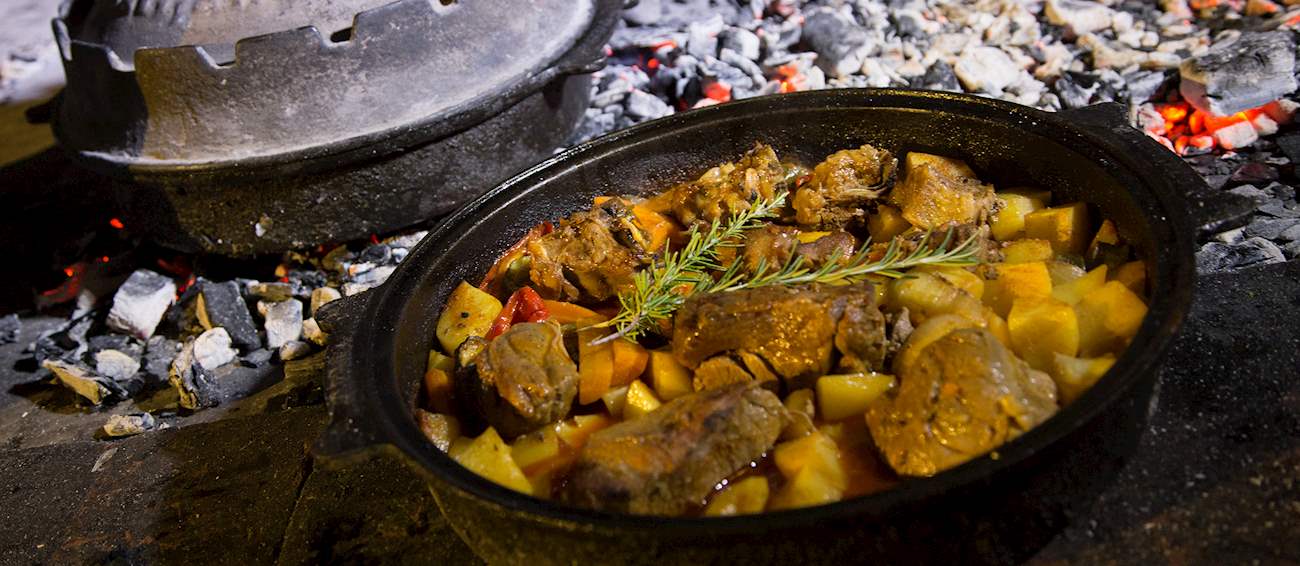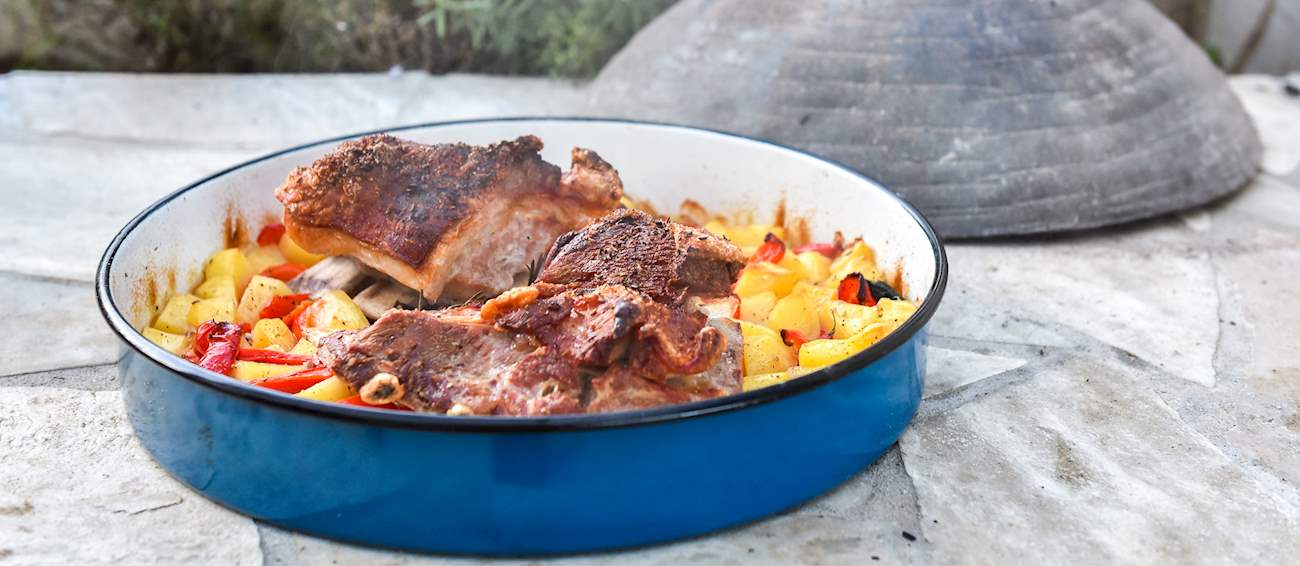Peka
(Sać, Sač, Pokljuka, Vršnik, Podravski pokrivač, Cripnja, Crepulja, Čripnja)
Peka or sać is an ancient technique of preparing various dishes inside the eponymous bell-shaped cooking vessel. The technique is mostly used for the preparation of meat, vegetables, or seafood that are seasoned and cooked together with olive oil, other types of fat, herbs, and occasionally wine.
The dome-shaped lid is put on top, and the whole vessel is then placed in an outdoor fireplace, while the lid is covered with hot embers. This preparation technique allows the ingredients to cook slowly and keeps all the flavors and aromas intact.
Peka was once a staple method of preparation that was common throughout Croatia, Bosnia, and Serbia, used not only for cooking meat, but for baking bread, pastries, or cakes. It is believed it initially appeared as an adaptation of primitive techniques for baking ingredients covered in clay, and later as an affordable option in households that could not afford ovens. Read more
Nowadays, peka is one of the signature techniques in Dalmatia, used to create hallmark dishes of the region such as veal (teletina) or lamb (janjetina) under the lid (peka), as well as octopus or bread baked under the lid. Apart from Dalmatia, the technique is also used in Istria and Bosnia, while it is also occasionally found in continental Croatia, Serbia, and other Balkan regions.
The vessel is most commonly made from cast iron, though some traditional versions may also be made from clay. The lid is usually rigged and has a metal ring which is used to hold the embers on top. Dishes baked under the lid are commonly found in traditional restaurants, where you usually have to order it in advance, but some households also cherish this tradition and prepare these dishes for special occasions and various social gatherings.




